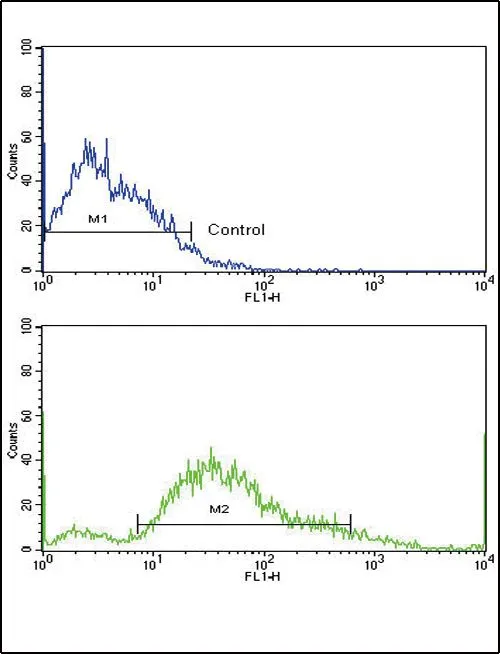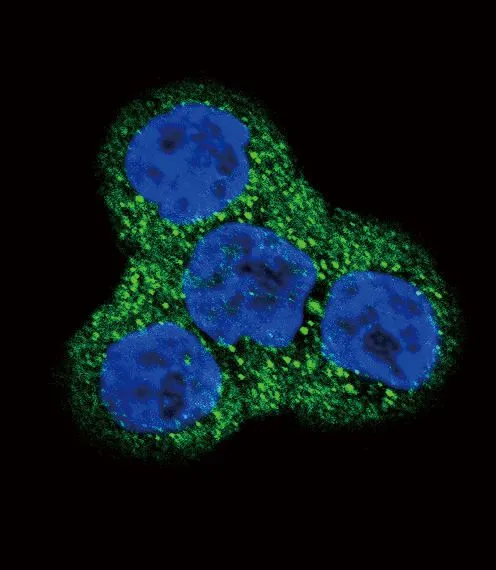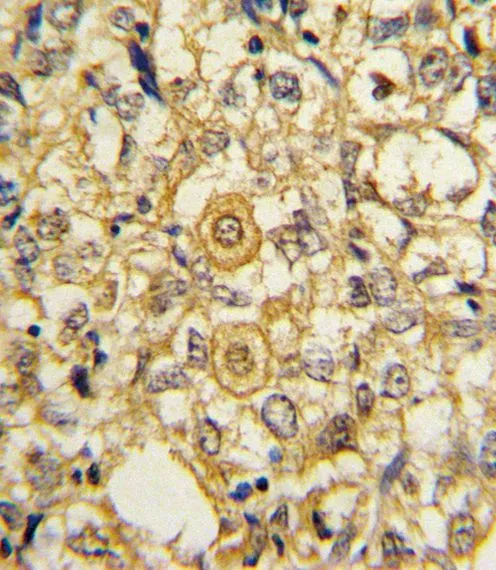
WB analysis of cell lysate (35ug/lane) using GTX25511 PDGF Receptor beta antibody.
PDGF Receptor beta antibody
GTX25511
ApplicationsFlow Cytometry, ImmunoFluorescence, Western Blot, ImmunoCytoChemistry, ImmunoHistoChemistry, ImmunoHistoChemistry Paraffin
Product group Antibodies
TargetPDGFRB
Overview
- SupplierGeneTex
- Product NamePDGF Receptor beta antibody
- Delivery Days Customer9
- Application Supplier NoteWB: 1:1000. ICC/IF: 1:10-1:50. IHC-P: 1:10-1:50. FACS: 1:10-1:50. *Optimal dilutions/concentrations should be determined by the researcher.Not tested in other applications.
- ApplicationsFlow Cytometry, ImmunoFluorescence, Western Blot, ImmunoCytoChemistry, ImmunoHistoChemistry, ImmunoHistoChemistry Paraffin
- CertificationResearch Use Only
- ClonalityPolyclonal
- ConjugateUnconjugated
- Gene ID5159
- Target namePDGFRB
- Target descriptionplatelet derived growth factor receptor beta
- Target synonymsActivated tyrosine kinase PDGFRB; beta-type platelet-derived growth factor receptor; CD140 antigen-like family member B; CD140B; IBGC4; IMF1; JTK12; KOGS; NDEL1-PDGFRB; PDGFR; PDGFR1; PDGFR-1; PDGF-R-beta; PDGFR-beta; PENTT; platelet-derived growth factor receptor 1; platelet-derived growth factor receptor beta; platelet-derived growth factor receptor, beta polypeptide
- HostRabbit
- IsotypeIgG
- Protein IDP09619
- Protein NamePlatelet-derived growth factor receptor beta
- Scientific DescriptionThe protein encoded by this gene is a cell surface tyrosine kinase receptor for members of the platelet-derived growth factor family. These growth factors are mitogens for cells of mesenchymal origin. The identity of the growth factor bound to a receptor monomer determines whether the functional receptor is a homodimer (PDGFB or PDGFD) or a heterodimer (PDGFA and PDGFB). This gene is essential for normal development of the cardiovascular system and aids in rearrangement of the actin cytoskeleton. This gene is flanked on chromosome 5 by the genes for granulocyte-macrophage colony-stimulating factor and macrophage-colony stimulating factor receptor; all three genes may be implicated in the 5-q syndrome. A translocation between chromosomes 5 and 12, that fuses this gene to that of the ETV6 gene, results in chronic myeloproliferative disorder with eosinophilia. [provided by RefSeq, Aug 2017]
- Storage Instruction-20°C or -80°C,2°C to 8°C
- UNSPSC12352203
References
- Fibroblast growth factor receptor 1 (FGFR1) as a therapeutic target in adenoid cystic carcinoma of the lacrimal gland. Doddapaneni R et al., 2019 Jan 11, OncotargetRead more




![FACS analysis of human CD140b / PDGF-RB stable transfectants using GTX80295 PDGF Receptor beta antibody [18A2].](https://www.genetex.com/upload/website/prouct_img/normal/GTX80295/GTX80295_20191028_FACS_1_w_23061322_808.webp)
![WB analysis of NIH3T3 cell lysate using GTX83371 PDGF Receptor beta antibody [1A2].](https://www.genetex.com/upload/website/prouct_img/normal/GTX83371/GTX83371_20170912_WB_w_23061322_862.webp)